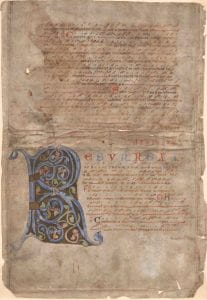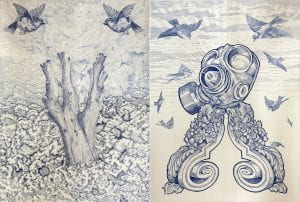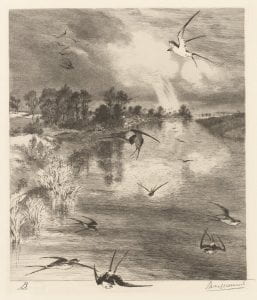A leaf from medieval gradual

This beautiful piece of manuscript is a leaf from a 11th or 12th century gradual, mostly likely originating in Austria or Southern Germany. It features brown and red script on vellum, and several decorative and colourful illuminations. While it might seem strange for a collection to contain a single page from a manuscript, it was relatively common in the world of rare book selling in the early 20th to separate manuscripts into pages to make them more sellable to a larger audience. While on one hand, it seems reprehensible to have broken up manuscripts which had survived centuries for the sake of profit, it did achieve the goal of making these medieval manuscripts, if only a sliver of them, more accessible to a larger number of libraries and collectors around the world. The leaf also shows evidence of folding around the edges, which suggests is also could have been used as a binding stiffener in another later book. Bits and pieces of medieval manuscripts have a remarkable propensity to show up hidden within all sorts of more modern works before they are found by an intrepid librarian and brought again to the light.



